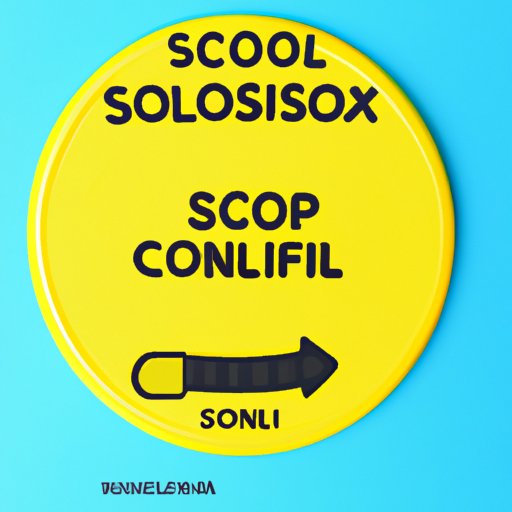
Introduction
A colonoscopy is a medical procedure that allows a doctor to check the colon for abnormalities and diseases. It is often recommended for people over the age of 50 to detect early signs of colon cancer. While this procedure is generally safe, it is essential to understand the dos and don’ts after the procedure, especially when it comes to driving. In this article, we will discuss when and how to resume driving after a colonoscopy to ensure your safety.
The Dos and Don’ts of Driving After a Colonoscopy: What you Need to Know
Driving after a colonoscopy is generally avoided for a short period of time due to the sedative effects of the medications used during the procedure. These effects can last for several hours after the procedure and can affect your physical and cognitive abilities. Here are some general guidelines to follow when it comes to driving after a colonoscopy:
- Avoid driving for at least 24 hours after receiving sedation during a colonoscopy
- Do not drive if you still feel drowsy or impaired from the medication
- Have someone accompany you and drive you home after the procedure
- Wait until you feel alert and have regained your mobility before driving
By following these guidelines, you can ensure your safety and the safety of others while driving after a colonoscopy.
How Long After a Colonoscopy Can You Drive? A Definitive Guide
The recovery period after a colonoscopy varies depending on several factors such as overall health, age, and the type and amount of medication used during the procedure. Generally, it is safe to drive at least 24 hours after the procedure, but it is important to confirm this with your doctor before resuming driving. Some factors that may affect the recovery time and when it’s safe to drive include:
- The type and amount of sedation used during the procedure
- Any post-procedure complications that may affect mobility or alertness
- Overall health and age
It is essential to consult with your doctor and follow their instructions on when it is safe to resume driving after a colonoscopy.
Driving Safety After a Colonoscopy: Tips to Minimize Risks
To minimize risks while driving after a colonoscopy, it is important to take some precautions such as:
- Ensuring you feel alert and have regained your mobility before driving
- Wearing comfortable and loose-fitting clothing
- Having someone accompany you on the first few drives after the procedure
- Avoiding heavy meals before driving
- Taking breaks during long drives to avoid fatigue
In addition, it is important to deal with any symptoms that may affect your driving ability such as abdominal pain, nausea, or dizziness before driving.
Colonoscopy and Driving: Why it’s Crucial to be Patient and Informed
Paitience is key when it comes to driving after a colonoscopy. Rushing to drive too soon after the procedure can result in severe consequences such as accidents and even death. It is vital to be informed about the safety guidelines and risks associated with driving after a colonoscopy to ensure your safety and the safety of others on the road.
When is it safe to get behind the wheel after a colonoscopy? Here’s what doctors say
According to medical professionals, it is generally safe to resume driving 24 hours after receiving sedation during a colonoscopy. However, this varies depending on each individual’s overall health, age, and the type of medication used during the procedure. It is important to consult with your doctor and follow their instructions on when it is safe to resume driving. Additionally, doctors may recommend having someone accompany you on your first few drives after the procedure to ensure you stay safe and focused on the road.
The Truth About Driving After a Colonoscopy: Separating Facts from Fiction
There are several myths surrounding driving after a colonoscopy. However, it is important to separate facts from fiction to ensure your safety and that of others on the road. Here are some common myths and facts about driving after a colonoscopy:
- Myth: You can drive immediately after the procedure – Fact: It is generally recommended to wait at least 24 hours after the procedure to resume driving
- Myths: You can drive even if you still feel drowsy or impaired from the sedatives – Fact: It is not safe to drive if you’re not alert and fully recovered from the medications
- Myth: Sedation does not affect driving ability – Fact: Sedation can affect physical and cognitive abilities necessary for safe driving
By separating facts from fiction, you can ensure your safety and that of others on the road while driving after a colonoscopy.
Driving After Sedation: What You Need to Consider After a Colonoscopy
Sedatives used during a colonoscopy can affect physical and cognitive abilities necessary for safe driving. Here are some key considerations to take when driving after receiving sedation:
- Wait until you feel fully alert and have regained your mobility before driving
- Avoid driving if you feel drowsy or impaired from the medication
- Consult with your doctor on when it is safe to resume driving
- Have someone accompany you to your first few drives after the procedure to ensure your safety
- Avoid long drives and take frequent breaks to avoid fatigue
By taking these precautions, you can minimize risks and ensure your safety while driving after a colonoscopy.
Conclusion
Driving after a colonoscopy requires patience and strict adherence to safety guidelines to avoid accidents and ensure your safety and that of others on the road. By following the dos and don’ts, consulting with your doctor on when it’s safe to resume driving, and taking precautions while driving, you can minimize risks and return to your normal routine safely and without any complications.





